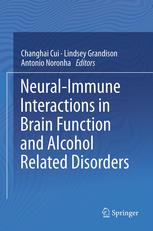

Most ebook files are in PDF format, so you can easily read them using various software such as Foxit Reader or directly on the Google Chrome browser.
Some ebook files are released by publishers in other formats such as .awz, .mobi, .epub, .fb2, etc. You may need to install specific software to read these formats on mobile/PC, such as Calibre.
Please read the tutorial at this link: https://ebookbell.com/faq
We offer FREE conversion to the popular formats you request; however, this may take some time. Therefore, right after payment, please email us, and we will try to provide the service as quickly as possible.
For some exceptional file formats or broken links (if any), please refrain from opening any disputes. Instead, email us first, and we will try to assist within a maximum of 6 hours.
EbookBell Team

4.4
62 reviewsRecent studies have provided clear evidence on the role of neural-immune interactions in normal brain function and neuropathological conditions. Neuroimmune factors, which play an essential role in neuroinflammatory response, have been implicated in the regulation of neuronal function and plasticity. Thus, neural-immune interactions provide a new frame work for understanding the role of the neuroimmune system in normal brain function, neurodevelopment, and a variety of neurological disorders. These advances have a far reaching impact on many areas of neuroscience, including alcohol research. Studies using human alcoholic brains, gene knockout mice, and gene expression profiling have established a clear link between alcoholism and an altered neuroimmune profile. This book integrates emerging knowledge on neural-immune interactions with key discoveries in alcohol research and provides a comprehensive overview of neural-immune interactions in brain function and behavior associated with alcohol use disorders. While Neural–Immune Interaction in Brain Function and Alcohol Related Disorders focuses on neural-immune interactions in areas directly related to alcohol use disorders, it is not intended to be all inclusive. Several areas, including sleep disorders, pain, and cholinergic anti-inflammatory pathways, are not covered as independent chapters but briefly mentioned in the text. The close relevance of these topics to neural-immune interactions and alcohol use disorders warrants future discussion and more research efforts.